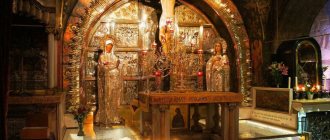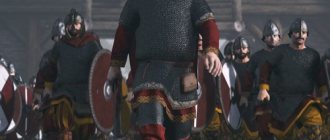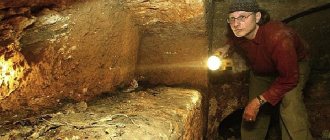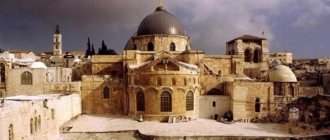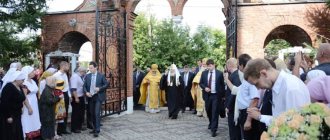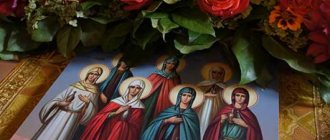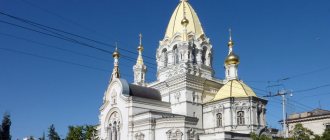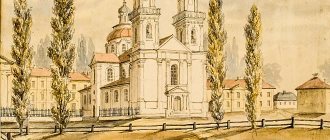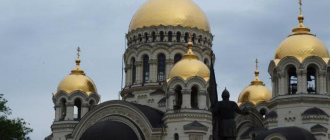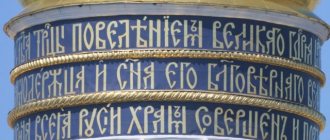Before starting the topic of the Stone of Confirmation in the Church of the Holy Sepulcher, let us turn to the Gospel words spoken by the Creator of the entire universe.
Jerusalem! Jerusalem, who kills the prophets and stones those who are sent to you! Before the crucifixion, Jesus sighed so much for this city! More than once he wanted to gather his children, like a bird gathers its chicks under its wings. But they did not want to do this. Therefore, the Lord left their house empty until they exclaimed: “Blessed is He who comes in the name of the Lord!”
Stone of Confirmation in the Church of the Holy Sepulcher
The city of Jerusalem is located on the plateau of the Judean Mountains, on the watershed between the Dead Sea and the Mediterranean Sea. This city has become sacred to major religions such as Judaism, Christianity and Islam.
As the Bible says, somewhere in the year 1000 before the coming of Jesus Christ into the world, King David, who led the Jews, conquered the city from the Jebusites. He built his fortress here, which became known as the “City of David.” The ruler proclaimed this city the capital of the kingdom of Israel, where the greatest shrine of the Jews, the Ark of the Covenant, was kept. Thus, David created a city where religious belief was fully represented, with shrines from all twelve tribes of Israel.
Stone of Confirmation. Jerusalem. Temple
The history of the Church of the Holy Sepulcher itself begins with the reign of Emperor Constantine and Queen Helena. The construction of the temple was entrusted to two architects - Eustach and Zinovy.
It consisted of three parts: Anastasis, presented in the form of a rotunda, the Garden of Joseph of Arimathea and Golgotha. Here you can also see a basilica of five naves, which are elongated rectangular buildings. In 335, on September 14, the new temple was solemnly consecrated in the presence of the emperor himself.
History of the structure
The history of the Church of the Holy Sepulcher originates from the first followers and disciples of Jesus Christ. During the reign of Constantine, Christianity became the state religion. His mother Elena was a deeply religious believer, and it was she who had a prophetic dream with a request to visit the holy places of Jerusalem. It was thanks to this dream that excavations were carried out on the mountain, as a result of which they discovered:
- the cross on which Jesus Christ was crucified;
- 4 nails;
- entrance to the cave where Jesus was buried;
- a tablet on which was written INRI (translated this inscription meant “Jesus the Nazarene, King of the Jews”).
It was on the site of these finds that the Jerusalem Temple was originally founded. This building was consecrated in 335, the ceremony was attended by the emperor, his relatives and representatives of various clergy.
The best article for you, go to: Is it possible for an Orthodox person to do yoga?
Most of all, the temple suffered from natural disasters. It suffered 2 earthquakes in 1545 and 1927, as well as a severe fire in 1808. After these incidents, the temple was further strengthened and decorated with new frescoes. It is in this form that he appears before our eyes today.
Main parts of the temple
The Jerusalem Temple of the Resurrection of Christ consists of three main buildings:
- Temple on Mount Golgotha;
- Chapel of the Holy Sepulchre;
- Church of the Resurrection.
The Church of the Holy Sepulcher was built and distributed among different religious denominations, including Orthodox, Catholic, Syrian, Armenian, Coptic and Ethiopian. There is some kind of agreement between confessions that allocates hours for prayers and services. Amateur activities on the temple premises are strictly prohibited.
The keys to the temple gates are owned by a Muslim family, which passes them on to the oldest son every generation. A member of the Muslim family of Nuseibeh opens the gates to the temple every day and also checks the serviceability of the locks.
The entrance to the sacred place begins with an arch, after passing which you can see the stone of anointing in the Church of the Holy Sepulchre. On this stone the body of Jesus Christ was placed after the crucifixion and anointed with aloes and myrrh. The stone in the Church of the Holy Sepulcher is located in front of a wall with a mosaic depicting the taking down of the Son of God from the cross.
In the central part of the building there is a marble chapel. It closes the entrance to the Holy Sepulcher, the burial place of the Son of God. Here, before Easter, the Holy Fire descends and passes to believers through a small window. The fire is carried out burning on 33 candles, the number of which is equal to the number of Jesus’ earthly years.
Miracles in the Church of the Holy Sepulcher occur every year, proof of this is the descent of the Holy Fire. A representative of the Greek Catholic denomination enters the Holy Sepulcher and awaits the descent of the Fire. A representative of the Armenian Church is monitoring him to ensure that modern means of producing fire are not used.
The best article for you, go to: Signs in the church - a candle fell
The second most important sacred place on the territory of the temple is Mount Golgotha. It can be reached via a marble staircase. There are three central places in Calvary Temple. A silver cross marks the place where Jesus' cross was located. And also two black circles are drawn on the places where a couple of robbers were executed. Behind the marks there is a glass wall, through which you can clearly see a crack in the rock, which, according to legend, appeared after the last breath of the Son of God.
The Temple of the Ascension is the third shrine, in the center of which there is a stone vase. It is a symbol of the “navel of the earth.” From this place a staircase leads to the dungeon, where the Cross of Christ and nails were found.
Construction of a new temple
The temple stood beautiful and majestic until the Persians captured the city in 614. Emperor Romanus began restoring the shrine in 1031. But three years later, a strong earthquake destroyed the building.
Then, in 1048, Emperor Constantine began the restoration of the temple. But soon the crusaders begin to rebuild it. This story has survived to this day.
Today, a huge number of pilgrims and tourists come to Israel. The Church of the Holy Sepulcher in our time is a huge architectural structure with a dome, under which there is the Edicule, the Catholicon (the Patriarchal Cathedral Church of the Jerusalem Orthodox Church), then there is the underground Church of the Finding of the Life-Giving Cross, then the Church of St. Equal to the Apostles Helen and several more borders.
Holy Sepulcher
The Church of the Holy Sepulcher (or the Church of the Resurrection of Christ) is the end point of the Way of the Cross. It is believed that the Christian shrine is located on the very spot where Jesus was crucified and buried. This is where He was resurrected. And in honor of this joyful event for all Christians, a very beautiful ceremony of the descent of the Holy Fire is held in the temple every year.
I can imagine what’s going on there on Easter, even if in September, when we were there, there was just a sea of people! There was a long queue to get to each shrine. Thank God our guide is “his own man” there and we almost didn’t stand anywhere for more than half an hour. I heard that people stand there all day (!)
A little history about the Temple of the Lord
At the beginning of our era, the Romans built their pagan temple on the site of Christ's crucifixion. Only in 325 did the Christian Emperor Constantine I and his mother Helen demolish it, excavate it and build a huge church on the same site. Legend has it that during those excavations three crosses, nails from the execution site and the Holy Sepulcher itself were found.
Unfortunately, only a small part of that stunning complex has survived to this day - with marble cladding, precious castings and mosaics. It must have been very beautiful...
Naturally, after Constantine I, the Temple was destroyed and rebuilt many times. They say that rumors of another destruction of the Temple became the main reason for the crusade!
What now?
The modern version of the Temple consists of many chapels, a couple of monasteries, an old rotunda with a chapel with the Holy Sepulcher (this place is called Edicule), Golgotha with the site of the Crucifixion and an underground temple of the Finding of the Life-Giving Cross.
Edicule. Church of the Holy Sepulcher
I was surprised to learn that the Temple is divided between six (!) churches: Catholic and Greek Orthodox (which is logical) plus Syrian, Armenian, Coptic and even Ethiopian! Each of the services has its own "schedule" for prayers and services. And no one bothers anyone...
In general, this Temple simply amazes with its grandeur. I was amazed that there was no electric light there - only from candles and lamps, so it was always twilight there. The Orthodox hall is very large and beautiful. Once, when we were at the liturgy in this Temple at night, I decided to go outside for a walk and... got lost! I left the Orthodox hall and the main hall, where the Holy Sepulcher is, and I didn’t understand whether I was on the street or inside - it’s so big and dark, especially at night you can’t walk around there
Oh, and I really liked the story about the stairs! An ordinary wooden staircase is attached to the right window of the facade of the Church of the Holy Sepulcher. I was sure that our group was simply caught up in yet another restoration project. But it turned out that this nondescript construction stepladder has been standing in this place for about 100 years! And some mason put it there (now no one even remembers his name).
In general, this staircase rests on the cornice of one church, and is placed against the window of another. And in such a “visual” way it symbolizes “peace and friendship” between six faiths. It turns out that without the consent of each of them, nothing in the temple can be repaired, changed or rearranged!
And in the Church of the Holy Sepulcher there is kept... the navel of the Earth! A marble hemisphere hangs directly under the dome on a special stand. Now the “navel” (Jerusalem was previously considered the center of the earth) is chained to the ceiling with a powerful chain - they are afraid that someone will move or take the cup with them!
Well, my favorite story is about the keys to the Temple. Back in the 12th century, they decided that the keys to the Church of the Holy Sepulcher would be kept in one Muslim (!) family, and another (again, Muslim) family had the right to open and close the doors of the Temple!
So, both the keys and the right to “open and close” have been passed on in these families from father to son for hundreds of years. And every day the head of the Nusein family solemnly unlocks the doors of the Temple at dawn and locks them at sunset.
I wonder how the representatives of these families themselves feel about their honorable duty?
Description and main relics
Here you can see the holiest relics of the world and touch the most ancient values that became silent witnesses of those great events that tell about the life of Jesus Christ.
The Stone of Confirmation in the Church of the Sepulcher is presented in the form of a slab on which the bloody and tortured body of the Savior was placed.
The followers of the teachings of Christ, Nicodemus and Joseph of Arimathea, having removed the body of Jesus from the cross, first laid Him on a stone slab in order to then perform the ritual of anointing. And only then he was transferred to the tomb that Joseph had prepared for himself. This man was a secret disciple of the Lord, a rich and noble member of the Sanhedrin.
Interesting Facts
The Stone of Anointing is one of the most important relics. Many believe that the sacred myrrh emanates from it, and by running a handkerchief over the surface, you can improve your health. Tourists can also see and learn the following interesting points:
- the stone is hidden by a protective slab of pink marble - it protects the ancient shrine from the destructive influence of touch;
- the shrine is owned by 4 churches at once - Greek Orthodox, Roman Catholic, Armenian and Coptic;
- a panel describing the removal of Jesus from the cross, the rite of anointing with chrism and burial, created at the end of the 20th century (1990) by Vlasis Tsotsonis;
- 8 lamps burn tirelessly above the stove - 1 for each Christian denomination represented in the temple.
A tour of Jerusalem would not be complete without visiting this place. It has incredible energy and allows you to get in touch with the history of our world and the religions in it.
Joseph and Nicodemus
Kind and truthful, he was not afraid to ask Pilate to take the body of the crucified Nazarene. Having received permission, he took the Lord down from the cross. Having wrapped him in a shroud and carried out the funeral rites prescribed by the Jews, he transferred the body of the Savior to a coffin carved into the rock and rolled a stone onto it. The whole world knows this shroud under the name of Turin. In the biblical prophecies of Isaiah it is written: “He was assigned a grave with evildoers, but He was buried with a rich man.”
The Gospel says that Nicodemus brought myrrh and aloes to anoint the body of the Savior.
Description of the shrine
As mentioned above, the Stone of Confirmation is located in the Church of the Holy Sepulcher right in front of the entrance. It was specially covered on top with a smoothly polished marble slab 30 cm thick. The original pink limestone stone is stored under the slab. Its size is 2.7 m in length and 1.3 m in width. On the sides of the panels, on a marble board, the text of the troparion to the righteous Joseph is carved in Greek. Behind the stone you can see a colorful stylized mosaic panel in the Byzantine style, depicting the descent from the cross, the anointing of the body with incense and the burial process of the Savior. With the blessing of His Beatitude Patriarch Diodorus of Jerusalem, a wall was erected between the confessional plots.
Stone of Anointing
The Stone of Anointing is one of the oldest Christian shrines. It is a stone slab lined with marble, inside which is enclosed the Holy Stone itself, on which the Body of Jesus was laid before burial. When Joseph and Nicodemus (followers of Christ) took Him down from the Cross, laid Him on the Stone, anointed Him with perfume (myrrh) and wrapped Him in the Shroud. After this, the Body was taken from here and placed in a tomb. The Stone of Anointing is located directly opposite the entrance to the main Jerusalem temple - the Resurrection of the Lord, and it appears first before the eyes of those entering. The size of the slab is about 3 m in length and almost 1.5 m in width, the thickness of the stone is 0.3 m. The troparion of St. is inscribed on the sides. Joseph from Arimathea. Not far from the shrine, on the wall, there is a mosaic panel depicting the most important gospel events. The mosaic was created in the 19th century with the blessing of Patriarch Diodorus of Jerusalem. It symbolizes the border of interfaith possessions. During Byzantine times (395-1453), the Stone of Anointing was located in the chapel of St. Mary, which was subsequently destroyed by the crusaders who were rebuilding the Temple. On the western side of the shrine, within 12 m, there is a square ciborium, as well as the facing of the Stone in marble. Until the beginning of the century before last (1810), the Stone of Anointing belonged to the Catholic Order of St. Francis of Assisi, as evidenced by the mark in the form of two crossed hands. At that time, the Stone was covered with a different covering, but after the surface was renewed, the mark disappeared. Today, the Stone of Anointing simultaneously belongs to four Churches: Greek Orthodox, Armenian, Roman Catholic and Coptic. Any property and legal boundaries assigned to denominations are strictly specified and observed. In particular, nothing can even be moved from its place without general consent. Each of the faiths maintains an unquenchable fire in lamps hanging above the stone. Each Church has its own number: the Orthodox - 4 lamps, the Armenian - 2, the Catholic and Coptic - one each. These lamps were ordered by Russian merchants in Europe and were donated to the Temple of the Resurrection. There is no historical information about the exact place where the Body of the Lord was prepared for Burial. However, how the rite of Burial of the Shroud was carried out became known already in the 5th century. It is performed like this: 6 bishops take the Shroud, on top of which lies a large number of rose petals, and transfer it from Golgotha to the Stone of Anointing. Further, when the lithium ends, it is carried around the Edicule and placed on the Triday Bed, after which it is carried to the altar of the catholicon. There is numerous evidence that the Stone of Anointing streams myrrh, so pilgrims and tourists apply their personal shrines to it - crosses and icons, etc., thereby sanctifying and blessing them, and also collect the myrrh-streaming liquid with handkerchiefs, since it heals ailments. The important thing is that this shrine gives special grace to everyone who touches it with good feelings and thoughts. Priests recommend applying this or that thing to the Shrine without any packaging. It is strictly forbidden to sit on it. Women often soak their scarves in myrrh, which also makes them illuminated. After this, the scarves cannot be washed and should preferably be worn only for festive services.
Religious denominations owning the stone
In general, six denominations serve in the Church of the Lord. They are the owners of its premises and relics located on their territory. All this has already been stipulated and agreed upon in ancient statutes. The Stone of Confirmation in the Church of the Holy Sepulcher is considered the property of four churches at once. And each has its own special objects near the stone. The Greek church owns four lamps above the stone. Two lamps belong to Armenians. Catholic and Coptic - one.
This sacred relic was covered in black marble and was the property of Catholics from the Order of St. Francis of Assisi. This fact was confirmed by the drawing on it - two crossed hands.
Healing properties
In some amazing divine way, this stone has miraculous powers.
Pilgrims from all over the world come to venerate the Stone of Confirmation in the Church of the Holy Sepulcher, who consider this their primary duty. Here they atone for sins and receive blessings. Consecration on stone occurs naturally, even without the help of priests. The Stone of Confirmation streams myrrh.
Calvary
Immediately behind the central entrance to the Church of the Holy Sepulcher, two staircases are visible that lead up to Calvary. This terrible place is a small hill or rock on which Jesus Christ was crucified. According to legend, Adam was buried on Golgotha! Yes, yes, the same one who tasted the forbidden apple from the Garden of Eden.
Altar of Golgotha
At the top is Golgotha in the Church of the Holy Sepulchre. The entire space of Golgotha is divided between three altars.
The Altar of the Crucifixion belongs to the Greek Orthodox Church. It is located above the rock - right above the place where Christ was crucified. Under the glass near the altar you can see the surface of this eerie rock. And if you put your hand into the hole, you can touch Calvary in the place where the cross stood with Jesus crucified on it. I also put my hand with my pectoral cross through this hole and touched Golgotha. By the way, the twelfth stop of the Way of the Cross is made near the Altar of the Crucifixion.
The Altar of Nails already belongs to the Franciscan Catholic order. It is believed that here they tore off Christ’s clothes, played them with dice, and then nailed Jesus to the cross. Here we made the tenth and eleventh stops of the Way of the Cross.
The altar "Stabat Mater" (Stations of the Virgin Mary) marks the place at the base of the Cross where Jesus' mother stood during his crucifixion. This is the thirteenth time we have stayed here.
Above the altar hangs a very beautiful (I would even say “living”) wooden statue of the Mother of God with a sword in her heart. As we were explained, the statue illustrates the quote:
“And a weapon will pierce your own soul, so that the thoughts of many hearts may be revealed” (Luke 2:34-35).
And next to the statue are mountains of jewelry that pilgrims from all over the world donated to the Temple!
New Jerusalem
It is also worth noting that there is also a stone of anointing in the New Jerusalem Monastery, which is located in the Moscow region, in the city of Istra. On the territory of this monastery is the Resurrection Cathedral, which was built in 1658-1685. The idea was this: to create a copy of the Jerusalem Church of the Holy Sepulchre. However, what resulted was, one might say, a new artistic transformation. This temple was built according to special dimensions that were brought from Jerusalem. The first stage of construction was supervised by Patriarch Nikon himself. He chose craftsmen from his patriarchal court. But then the lawyers took up arms against Nikon and sent him into exile.
In 1679, by decree of Tsar Fyodor Alekseevich, grandiose construction continued.
Today we can see how the rotunda of the Holy Sepulcher is connected by the “Royal Arch”. In the center is the chapel of Kuvuklia, which translated means “bedchamber”. Heavenly Fire descends from it on Easter. It consists of the Cave of the Holy Sepulcher and the Angel's Chapel. This Jerusalem prototype is similar to the original wooden tent. Later, the rotunda above the Edicule was made of brick, which could not withstand its weight and collapsed in 1723. Thank God, no one was hurt, since all the people were at the Feast of the Ascension at the Chapel of Olives. Then there was a fire. About 10 years later, under the leadership of Rastrelli, everything was rebuilt in the Baroque style with wooden tiles and decorations.
